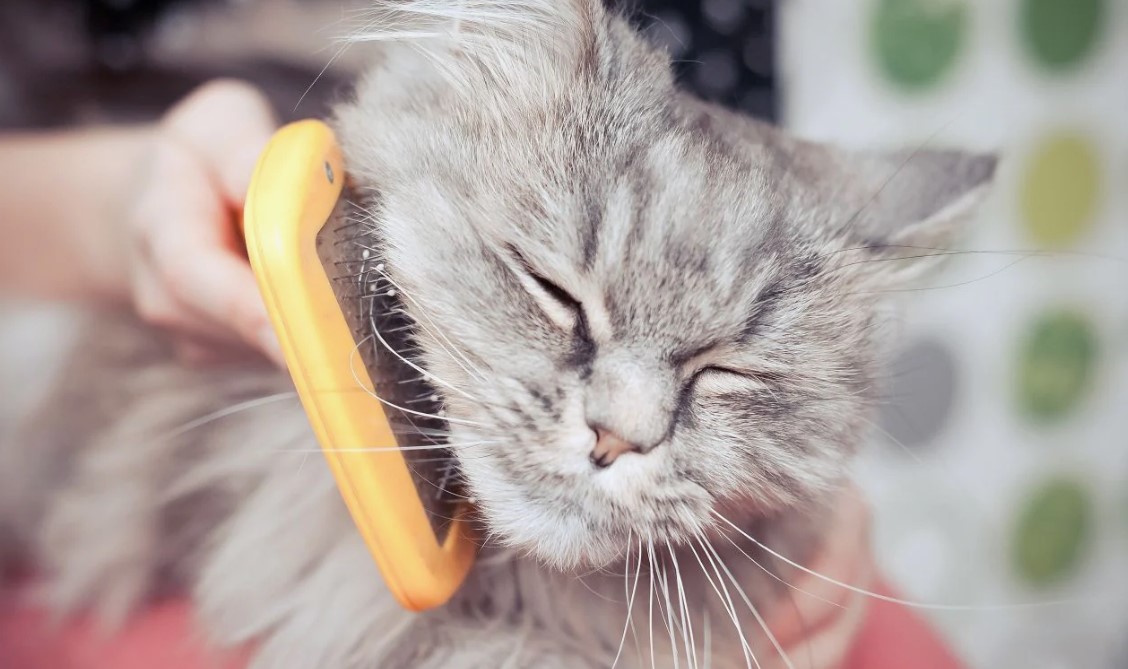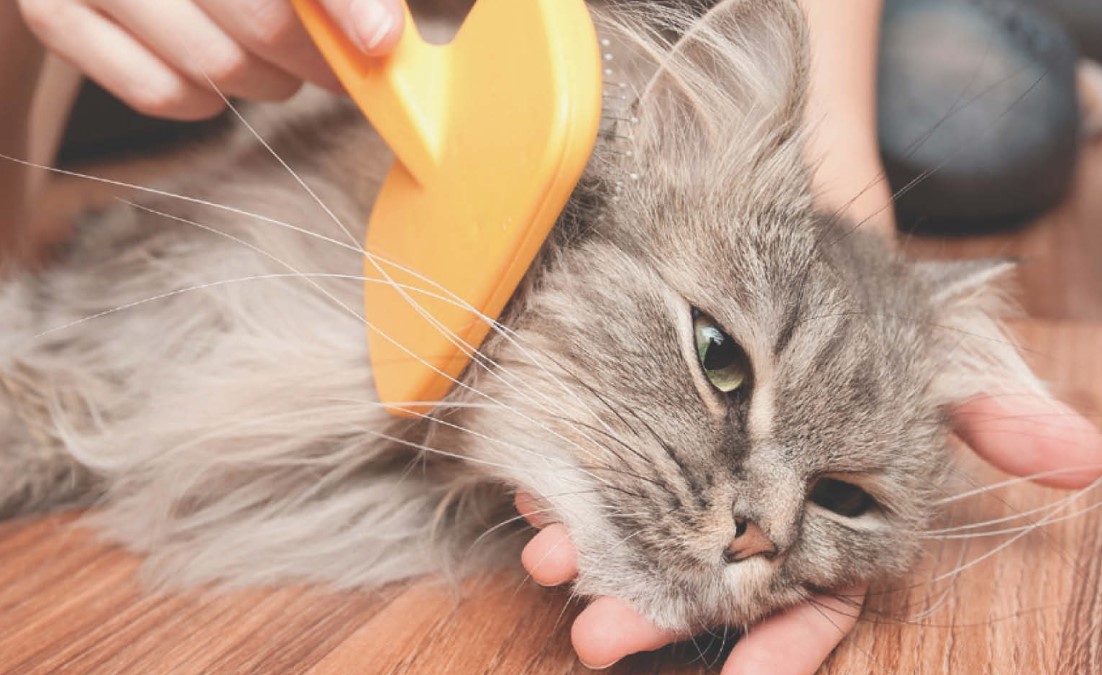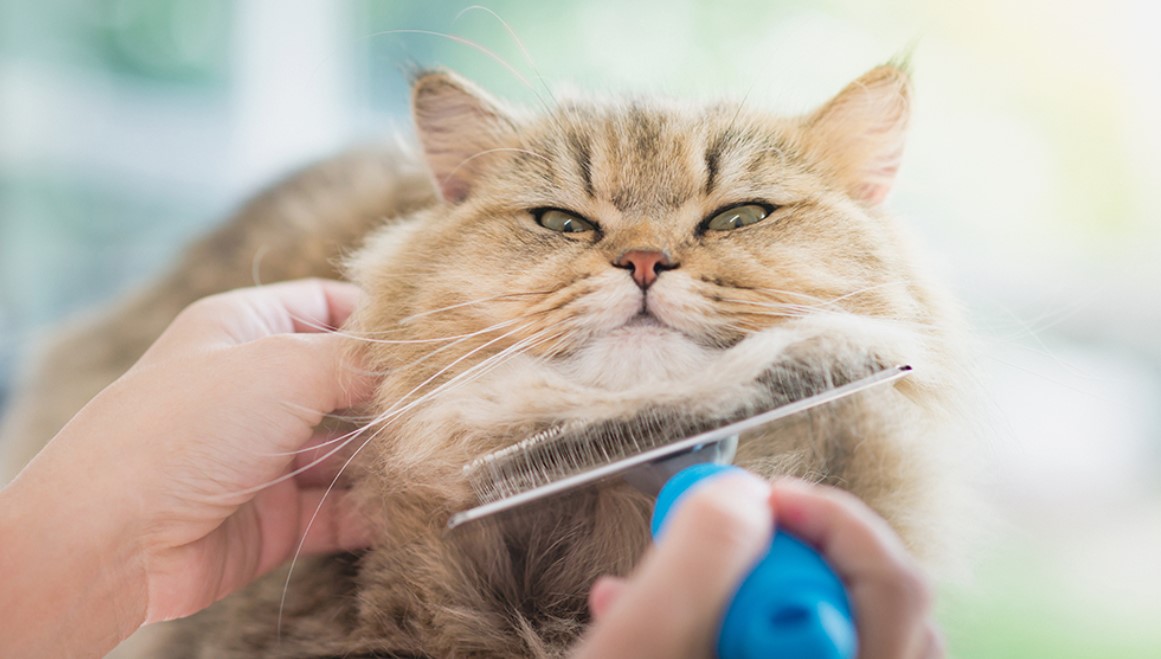Cats are known for their meticulous grooming habits. They spend a significant portion of their waking hours licking their fur, cleaning themselves, and maintaining their hygiene. However, during this self-grooming process, cats inevitably swallow a considerable amount of loose hair. While this is a natural behavior, it can lead to potential health risks when the ingested hair accumulates in the stomach and forms what is commonly referred to as hairballs, or “trichobezoars.” To address this issue, many pet owners turn to a cat hairball remedy, which helps prevent hairballs from forming and promotes healthy digestion.”
Hairballs are not uncommon in cats, especially those with longer coats or during periods of increased shedding. For many cats, hairballs pass through their digestive systems without causing problems. However, when large amounts of hair are swallowed, it can build up in the stomach and, in some cases, cause serious complications. Understanding the risks associated with hairballs and learning how to manage and prevent them is crucial for maintaining your cat’s overall health and well-being.
How Hairballs Form: A Closer Look
The formation of hairballs begins with a cat’s grooming habits. Cats have a unique type of tongue covered with tiny, hook-like structures called papillae. These papillae help them remove dirt, parasites, and loose fur from their coats as they groom. However, because these hooks are backward-facing, they tend to capture and collect loose fur, which the cat then swallows.
While some of the ingested hair passes naturally through the digestive tract and is excreted in feces, a portion of it can accumulate in the stomach. Over time, the hair can bind together, forming a dense, compact mass that becomes a hairball. While occasional hairballs may not be cause for alarm, repeated incidents or the inability of the hair to pass through the digestive tract can lead to complications, including blockages and gastrointestinal distress.

The Health Risks of Hairballs
Hairballs can lead to a variety of health problems for your cat, especially if they do not pass naturally or if they move into more delicate areas of the digestive system. Some of the most common and potentially dangerous complications associated with hairballs include:
Intestinal Blockages
One of the most serious risks associated with hairballs is when they pass from the stomach into the small intestine but become lodged there, causing a blockage. This condition prevents food from passing through the digestive system, leading to severe gastrointestinal distress. Symptoms of an intestinal blockage include:
- Repeated vomiting (often without bringing up the hairball)
- Abdominal pain and sensitivity
- Loss of appetite or refusal to eat
- Apathy or lethargy
- Dehydration due to excessive vomiting
Intestinal blockages are a medical emergency and require immediate veterinary attention. In severe cases, surgery may be necessary to remove the obstruction and restore normal digestive function.
Esophageal Obstruction
Though less common, hairballs can sometimes become stuck in the esophagus. This can occur when the cat attempts to regurgitate the hairball, but it gets lodged in the throat rather than being expelled. Esophageal blockages can cause symptoms such as:
- Difficulty swallowing
- Persistent coughing or gagging
- Frequent attempts to vomit or regurgitate with little success
- Signs of distress or discomfortLike intestinal blockages, esophageal obstructions require immediate veterinary attention. Prolonged obstruction can lead to further complications, including damage to the esophagus.
Nasal Blockages
In rare cases, hairballs can enter the nasopharynx, causing symptoms that resemble a respiratory infection, such as sneezing and nasal discharge. This type of obstruction can cause discomfort, difficulty breathing, and irritation. A veterinarian may need to remove the hairball to provide relief.
The Role of Malt Paste in Managing Hairballs
Fortunately, there are several ways to manage and prevent hairballs from becoming a serious issue for your cat. One of the most effective solutions is the use of malt paste, a product specifically designed to help cats pass swallowed hair through their digestive system naturally and safely.
Malt paste works by lubricating the digestive tract and softening the hairballs, allowing them to move through the intestines more easily. When used regularly, malt paste can prevent the formation of large hairballs, reduce the likelihood of vomiting, and promote regular bowel movements. In addition to helping cats expel hair, malt paste can also prevent constipation, which is a common issue in cats with frequent hairball problems.
How Malt Paste Works
Malt paste typically contains a combination of ingredients that work together to aid digestion and prevent hairballs from accumulating in the stomach. The primary ingredients include:
- Malt Extract: Malt is a natural ingredient that helps soften the hairball, making it easier to pass through the digestive system.
- Liquid Paraffin: Paraffin acts as a gentle lubricant, coating the hair and helping it move smoothly through the intestines.
- Preservatives (Propylparaben): These are included to ensure the paste remains fresh and effective.
- When malt paste is ingested, it creates a coating in the stomach that envelops the hairball, preventing it from sticking to the stomach lining or forming larger, denser masses. The lubricating properties of the paste help the hair pass more easily through the digestive tract and out of the body.

How to Use Malt Paste
Malt paste is easy to administer and can be used both as a preventive measure and as a remedy for existing hairball problems. It is typically applied orally, either directly into the cat’s mouth or mixed with food. The recommended dosage varies depending on the size of the cat and the severity of the hairball issue, but in general, most manufacturers suggest squeezing out 2-3 cm of paste from the tube and giving it to your cat two to three times per day between meals.
For cats that are reluctant to take the paste directly, it can be applied to the cat’s paw, where they will instinctively lick it off while grooming. This method is particularly useful for finicky eaters or cats that resist taking medication.
It is important to note that malt paste should not be given to cats with certain gastrointestinal conditions, especially during flare-ups of chronic illnesses. If your cat has a history of digestive issues, consult with a veterinarian before introducing malt paste into their diet.
Signs Your Cat May Need Malt Paste
Not all cats will exhibit obvious symptoms when dealing with hairballs, but there are several signs that indicate your cat may benefit from regular use of malt paste:
🡪Increased Shedding
Cats shed more heavily during certain seasons, such as spring and fall. If you notice more fur around your home or on your cat’s bedding, it may be a sign that they are ingesting more hair while grooming.
🡪Frequent Vomiting of Hairballs
While occasional regurgitation of hairballs (1-4 times per month) is considered normal, more frequent episodes could signal a problem. If your cat is regularly vomiting hairballs, malt paste can help reduce the frequency of these incidents.
🡪Constipation
If your cat has difficulty passing stool or seems to be straining in the litter box, this could be a sign that hair is accumulating in their intestines and causing a blockage. Malt paste can help alleviate this issue by lubricating the digestive system.
🡪Lethargy or Behavioral Changes
Cats experiencing discomfort from hairballs may become less active, avoid food, or exhibit unusual behaviors such as excessive grooming, restlessness, or lethargy.
Preventing Hairball Formation in Cats
In addition to using malt paste, there are several other ways to reduce the risk of hairball formation and keep your cat’s digestive system healthy:
Regular Grooming
One of the most effective ways to prevent hairballs is to groom your cat regularly. Brushing or combing your cat’s fur helps remove loose hairs before they can be swallowed during grooming. Long-haired cats, in particular, benefit from daily brushing to minimize the amount of fur they ingest. Grooming also reduces shedding, which is especially important during seasonal changes when cats naturally lose more hair.
Frequent, Smaller Meals
Feeding your cat smaller, more frequent meals can help promote regular digestion and reduce the chances of hair accumulating in the stomach. Regular meals encourage food and hair to move through the digestive system at a steady pace, minimizing the likelihood of hairball formation.
Specialized Hairball-Control Diets
Many pet food manufacturers offer specialized diets designed to control hairballs. These formulas are high in fiber, which helps move hair through the digestive tract and prevents it from accumulating. Hairball-control diets are especially beneficial for cats prone to frequent hairballs or those with long, thick coats.
Conclusion
Hairballs are a common problem for cats, particularly during shedding seasons or in breeds with longer fur. While occasional hairball regurgitation is normal, frequent episodes or complications such as intestinal blockages can pose serious health risks. By incorporating regular grooming practices, adjusting feeding routines, and using products like malt paste, cat owners can help prevent hairball formation and ensure their feline companions stay healthy and comfortable.
Malt paste is an easy, effective way to help cats pass swallowed hair naturally, preventing vomiting, constipation, and gastrointestinal distress. By paying attention to your cat’s grooming habits, feeding them a balanced diet, and using preventative measures, you can significantly reduce the chances of hairball-related complications and keep your cat happy and healthy year-round.

Basketball fan, father of 3, music blogger, Mad Men fan and storyteller. Producing at the crossroads of simplicity and intellectual purity to craft an inspiring, compelling and authentic brand narrative.
